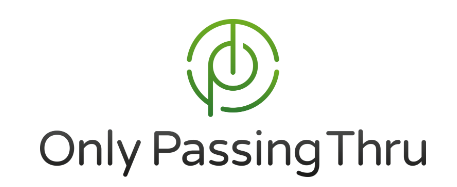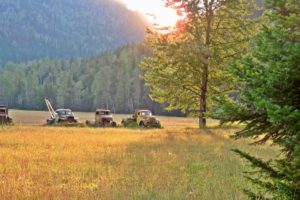Arrived in Killarney (Ireland) after two buses and a train. Had a walk around the quaint old town and bought a couple of gifts. The Claddagh is a traditional Irish symbol (hands clasping a heart with a crown) – – symbolising friendship, loyalty and love…. so bought something with that as an appropriate gift for my dear friend.
Grabbed a homemade Murphy’s icecream – picked Dingle ( a seaside town) sea salt and Irish brown bread flavours- not the most appetising sounding but hey when in Ireland… but it was some of the most delicious ice cream I’ve ever had.
Headed back to the hotel and took advantage of the hotel being the local gym and had a swim and a sauna. Was entertained by a group of teenage boys experiencing their first sauna and talking about it in their broad Irish accents. Was very entertaining, as it was for them, when they asked me to say ‘g’day mate’. The young man who was in there too then mentioned he’d worked in Australia and his favourite saying was ‘ chuck a Uey’ ( take a uturn).
Sadly those likeable lads got thrown out cos they were mucking around a bit. Thought it was sad as they were just having innocent fun and the young man said that the youth were getting into a lot of trouble on the streets. Interestingly the young boys all told me their families were from Czechoslovakia ( and the use of that term indicates the timing of when they came out). They all spoke Czech as well as a thick Irish accented English having been born here.
The introvert in me was tempted to go to bed but thought I should experience things whilst here so went for a walk around town to find that bollards had been put up and turned the street into a pleasant mall with buskers and people joining in the singing. Most of the MANY pubs here were playing traditional Irish music which is very nice. I popped into one for dinner and had a delicious Irish stew made with tender lamb and a pint of Guinness zero.








The next day was my tour day. Something I’ve always avoided. But having been unable to hire a car and finding that public transport is very difficult here in short time frames I figured it’s what I had to do. There are two main tours that go from here. The famous Ring of Kerry which goes around one peninsula and the Dingle way which goes around the Dingle peninsula. Now having done the research for my planned road trip I knew there were lots of interesting sites, views and historical/archaeological sites on both routes. They seemed pretty famous so I mistakenly assumed that tours would stop at least a few of these. The first tour I was doing was the Ring of Kerry. I have a pretty negative view of bus tours I’ll admit. I know that they are the only option for a lot of people but they’re really not for me whilst I am still able bodied. But this was the situation I was in and I was determined to be open minded and positive about it. It wasn’t a good start that the weather was miserable and raining. But given that they’ve had a dry spell here and the farmers were keen for some rain I wasn’t going to complain about that. Our first stop was at a traditional Irish village reconstruction. It was pretty cute and had a little bit of information but it took about 10 minutes to look at it all. What they didn’t tell us beforehand and wasn’t in the tour information is that the entry fee was additional. And there were no other options at this half hour stop. Apart from of course going to the cafe where they encouraged you to spend a hideous amount of euros on vast trays of Irish coffees which had to be drunk standing up as there was not enough room to sit. What was interesting though was driving through the countryside and seeing the fields where bog peat or turf was still being cut out of the ground to be used for fuel. That was interesting as I had always thought that for environmental reasons that practice had been banned. We also heard that 300 year old butter had been found in a peat bog that was still edible. Apparently it is was a way of preserving and kept things very well preserved including the famous peat bog bodies that have been found well preserved after thousands of years.
Driving through the hills we saw the last flowering of rhododendrons which are beautiful and planted in many a garden in Australia. But unfortunately they have become a pest here causing problems for the native fauna. They were introduced when planted for QUeen Victoria’s visit to the area.
I also learnt that the Irish Kerry bog pony is a mountain and moorland breed of pony that originated in this area. It is a very small but sturdy breed that is native to the peat bogs of this County Kerry. It has a low weight- to height ratio and an unusual footfall pattern that helps it move on soft ground such as peat bogs. They nearly became extinct until someone started a breeding programs in the early 2000’s. They are also now as ‘hobbies’. It is closely related to the Shetland Pony and Icelandic horse. The Irish wolfhound was also at the village and I learned that there are accounts dating back to Roman times of these dogs in Ireland often owned by the Irish chieftains and warriors. They became coveted gifts to emperors and kinds. In 391 AD seven were gifted to Roman statesman Quintus Aurelius. They were well regarded as hunting dogs – hunting deer, elk, boar and wolves and used in battle and as guard dogs. The ones we saw at the village were huge and they’re meant to be the tallest dogs in the world. We also saw ruins of cottages from which people had been evicted or fled during the Irish famine of the 1840’s caused by potato blight that caused all the genetically similar potatoes crops to fail. A real lesson in not putting all your eggs in the same genetic basket. It was a cause of many deaths and also mass migration – many to Australia.
The next stop was at a sheepdog demonstration. Again we were told this was an additional cost and they only took cash. So if you hadn’t brought cash ( because there was no notice of this) then you would have missed out – on what was probably the best part of the trip. It was amazing to watch this old Irish shepherd command his dogs to round up the sheep. He had different sets of commands for the two dogs. So by simply using different words each dog knew when they had to do something. Then for when the dog was too far away to hear his voice he had whistle commands that they knew – each one meant something different like go left, go right, lay down etc. Amazing. Similar to what they do in Australia but it was still green with. He also showed us some of the different rare breeds of sheep including the native Galway sheep believed to a species from Viking times that is now protected.
Even with the horrible weather and a tour that just whizzed past things I was still able to see that it was a beautiful area. Unfortunately we didn’t stop at many of the nicer spots, nor did we stop at any of the historical sites. Strangely we stopped at a an isolated restaurant for lunch were there were not other options to eat or go and we were herded through a gift shop to get to the school cafeteria style lunch restaurant complete with trays and overpriced awful food. Then we had another half hour stop at a hillside cafe and gift shop. Thankfully I ditched that and walked up the road in the rain and around the corner to find some beautiful views that I got to see on my own. After that long stop at the gift shop we rushed past one of the famous viewpoints without stopping. By this point I was thinking ‘ screw these bus tours’ – and my views on them had been simply reinforced. Adding to the frustration I noted that despite the booking saying masks were to be worn on the buses – only two people wore masks, and the driver was coughing half the trip and the lady in front of me sounded like she was coughing up her lungs and was chewing on cold and flu tablets and telling her companion she felt unwell – of course she wasn’t wearing a mask – and this is in a pandemic where cases are rising again in the Uk. I couldn’t get off that bus fast enough. My dismay at the crappy itinerary made me double check the itinerary for the tour tomorrow – and guess what -no mention of any of the main sites in that area either. So I sent them an email on the bus cancelling the trip for tomorrow. And then searched and searched to find a tour that did the historical sites and found none except the private tours where you paid for the whole coach or car and booked it out for a group. So the tip for this area is to either hir a car and do a road trip, bring a group and organise your own private tours or use public transport but you’ll have to allow lots of time for all the connecting buses. The other warning is if you do drive a car take it easy – the roads are so narrow and big buses like the one we were on regularly have standoffs on the narrow bends and more than once we heard our driver mutter ‘Oh Dear God’ into his mike as a car got too close.
So a bit bummed that I’ll miss out on some of the ancient Celtic sites I was excited to see but never mind will make the most of what I can see.
We did get to whizz past some Ogham stones which would have been good to stop at. Ogham stones are stones on which short marks were made in groups of between one and five notches, strokes or diagonal lines, usually on the edge of the stone. Each group signifies a sound in Old Irish, and they are the oldest surviving written form of the language which is still spoken in this area. The letters/sounds which were carved are based on the Latin alphabet which we still use today. The inscriptions can signify a single name, or a phrase such as ‘X son of Y of the family of Z’, but sometimes a little more detail is added. The inscriptions can date from the end of the 4th up to the early 8th century AD. They were sometimes used as boundary markers or land claims or used at burial sites.
We also drove past the birthplace of Daniel O’Connell known in Ireland as the liberator. He was the political leader of Ireland’s Roman Catholic majority in the first half of the 19th century and he helped secure catholic emancipation in 1829 and was elected to the United Kingdom parliament.













































